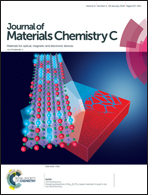The architecture of the electron transport layer for a perovskite solar cell
Abstract
The emergence of perovskite solar cells (PSCs) recently has brought new hope to the solar cell industry due to their incredible improvement of the power conversion efficiency (PCE), which can now exceed 20.0% within seven years of tremendous research. The efficiency and stability of PSCs depend strongly on the morphology and type of materials selected as the electron transport layer (ETL) in the device. In this review, the functions of the ETL based on titania (TiO2) in n–i–p architecture PSCs, including planar heterojunction and mesoporous-structured devices, are reviewed in terms of the device performance and stability. Studies found that the application of suitable fabrication techniques and manipulation of the nanostructural properties of TiO2 are crucial factors in ameliorating the short-circuit current density, JSC, and fill factor, FF, of PSCs. On top of that, the effect of substituting TiO2 with other potential inorganic materials like zinc oxide (ZnO), tin oxide (SnO2), ternary metal oxides, and metal sulphides, as well as organic semiconductors including fullerene, graphene, and ionic liquids, towards the photovoltaic properties and stability of the devices are also elaborated and discussed. Meanwhile, the utilization of non-electron transport layers (non-ETLs), such as alumina (Al2O3) and zirconia (ZrO2), as the mesoporous scaffold in PSCs is found to enhance the open-circuit voltage, VOC, of the devices.

- This article is part of the themed collection: Recent Review Articles


 Please wait while we load your content...
Please wait while we load your content...